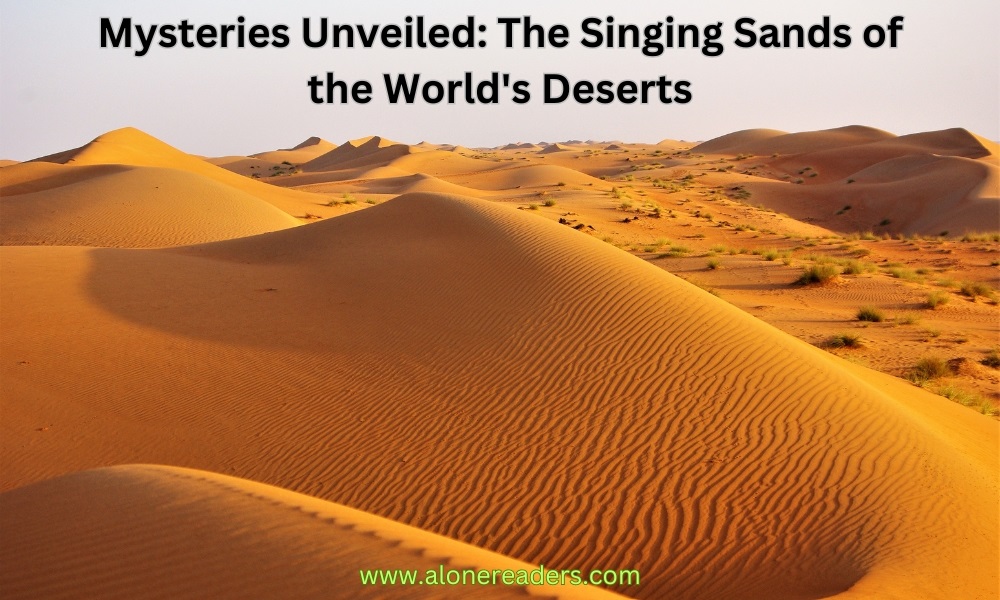
The world is filled with natural wonders, and among these are the ‘singing sands’ or ‘booming dunes’ found in deserts across the globe. This phenomenon, where sand dunes emit sounds that range from soft whispers to deep roars, has intrigued scientists and travelers alike for centuries.
At the core of understanding this phenomenon is the science behind it. Research suggests that the sounds are created when sand grains move and slide over each other under certain conditions. Factors such as the size and uniformity of the sand grains, humidity, wind speed, and the steepness of the dunes play crucial roles in this natural orchestra. The sound is often compared to that of a low-flying airplane or distant thunder, creating an eerie and unforgettable experience.
There are several locations around the world where this phenomenon can be witnessed. Notable sites include the Kelso Dunes in California, the Eureka Dunes in Death Valley, the Gobi Desert in Mongolia, and the Empty Quarter in the Arabian Peninsula. Each of these locations offers a unique setting and varying sound characteristics, providing a diverse experience for those who seek them out.
The singing sands have not only been a subject of scientific curiosity but also hold cultural and historical significance. Various local legends and myths are associated with these sounds, often interpreted as messages from the gods or spirits of the desert. The phenomenon has also been mentioned in historical accounts by travelers such as Marco Polo and Charles Darwin.
Studying this phenomenon presents unique challenges. The remote and harsh environments of the deserts make it difficult for continuous and detailed research. Additionally, factors like varying weather conditions and human impact on the environment can affect the consistency and intensity of the sounds.
Environmental factors play a significant role in the singing sands. Changes in climate, such as increased rainfall or changes in wind patterns, can alter the conditions that allow the dunes to 'sing.' Concerns have been raised about the impact of global warming and human activities such as off-road driving on these delicate ecosystems.
Tourism centered around these singing dunes has grown, offering visitors a chance to experience this natural wonder. However, responsible tourism is crucial to ensure that the environmental integrity of these sites is maintained. Efforts are being made to educate visitors about the importance of preserving these unique landscapes.
Recent advancements in technology and research methodologies have allowed scientists to gain a deeper understanding of this phenomenon. The use of drones, sound recording equipment, and computer simulations has provided new insights into how and why these dunes produce such haunting sounds.
As interest in this natural phenomenon grows, so does the need for its conservation. Organizations and governments are increasingly recognizing the importance of protecting these unique environments. Future research and conservation efforts will be essential in ensuring that the mystery and allure of the singing sands continue to enchant future generations.
The singing dunes remain one of nature’s most fascinating mysteries. As a convergence of science, culture, and natural beauty, they offer a unique and mesmerizing experience. The study and preservation of these singing sands are not just about unraveling a scientific enigma; they are about respecting and protecting the wondrous intricacies of our planet.